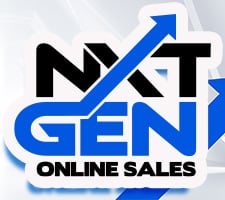
We caught up with judge Scott Greiner before he steps “Inside the Ring” at the Ohio State Fair Junior Show. Learn more about Scott below…
What’s been your all time favorite sheep you have judged?
I have been very fortunate to be asked to judge many great shows over the years and consequently got to sort lots of great sheep. So narrowing it down to one favorite is nearly impossible. I would say that it is interesting to look back at photos of champions over the years and compare them. There are many that for their time were elite, and in the moment in consideration for best I have ever had chance to evaluate. The bar continues to get higher, sheep and showman get better, and we evolve as an industry. This does not take away from the relevance and quality of those animals at the time, just makes it difficult to compare one show to the next, particularly over a span of time.
Who’s your biggest influence in evaluating livestock?
My Dad and others as a grew up provided the basics I continue to adhere to, rooted in the fundamentals associated with the livestock production industry. When I got to college and had more formal training and participated in judging teams I had great teachers, coaches and mentors which certainly had a strong influence. Then as a judging team coach, I got to visit many great breeders’ operations and learn from them. These influences continue today, as I work daily with the livestock industry and lots of great people that all have an influence.
What do you look for when evaluating?
For me it all starts with the basics- first and foremost market livestock that are compositionally correct (muscular, appropriate finish, fresh), stout and productive in their body shape, made right in their skeleton and athletic on the move, along with balanced and proportional in their design. From there the elite ones have a special presence and command your attention.
If down to the last few, what will be your sort?
Often the differences among the top few are minimal, and it comes down to putting the little things together. For me, they don’t necessarily have to be the most extreme in any given attribute but at same time not have any significant issues or deficiencies. In end it’s which one puts it all together the best
Do you prefer to evaluate when sheep are in motion or stuck on profile?
Both are important. I have always been one which evaluated sheep on the move, and have always preferred sheep which maintain balance and proportionality in motion as well as stuck. When set in motion, much is revealed about an animal- not just their structure and balance, but also their fundamentals of natural skeletal width, muscularity, etc. Given the caliber of showman these days, it is imperative to get them on the move to for an accurate evaluation.
Tell us about your family!
My wife Lori and I have two wonderful daughters. Kaylee just completed her Master’s degree in Meat Science at Texas A&M. Leah will be a senior at Iowa State this fall majoring in Animal Science. We are proud they are both pursuing careers in the livestock industry. While our days as a show family are now over, we all continue to give back in any way we can to youth livestock programs.
In your mind, how has the industry changed in the show ring over the last 10 years?
The quality and competitiveness continues to rise year after year. This is a testament to the breeders as well as exhibitors- the livestock are tremendous, and the management and showmanship is on whole different level than it was a decade ago. Lots of things have played a role in this- genetic technologies on the breeding side of things, and many tools as well as education on the exhibitor’s side of things. What I think is really special about our show industry is that while it is highly competitive, there are many which are available to teach, mentor, and lend a hand to new and existing families to help them reach their goals. What has not changed over the last 10 years is the value of our youth livestock programs and their importance as a vehicle to develop the next generation. In fact, our programs are more important and valuable than ever in my opinion!
















